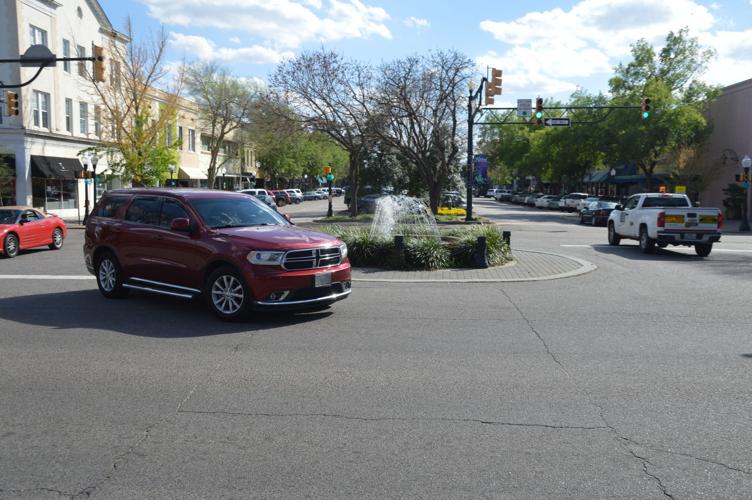Masters Week brings many new faces to Aiken every year, which leads to roads full of drivers who, typically, don’t know how to drive in downtown Aiken.
Lt. Ben Harm, with the Aiken Department of Public Safety, said one the biggest problems out-of-towners have when visiting Aiken is learning what to do and what not to do when driving around downtown.
Two obstacles that tend to cause the most problems for drivers are the circle and square intersections where one-way streets meet.
“Knowing how to properly maneuver through the circle and square intersection can be tricky – and it’s not just an issue with visitors – many Aiken residents still have problems navigating through downtown,” Harm said.
Harm said drivers have trouble with these obstacles because they are similar in design, but different rules apply to each of them.
Those who are new to Aiken may notice a vehicle (or several) go straight through a red light at an intersection or make a left turn through another red light.
“This can seem confusing to some drivers,” Harm said. “People just aren’t used to these kind of intersections, but I think, once you get it and drivers are using these areas correctly, it makes traffic run a lot smoother.”
History of downtown Aiken roads
Understanding the history behind the one-way streets may help drivers navigate them, said Mary White, an educator at the Aiken County Historical Museum.
The unique streets in Aiken are a result of the construction of the first major passenger railroad line built in the United States in the early 19th century, White said.
“Park Avenue in downtown Aiken was originally called Railroad Avenue when the train came through it; but in the 1850s the road became a park, hence the name Park Avenue,” White said.
In the 1940s, Park Avenue was divided into a one-way street as the town grew and upgrades were made, White said.
With time, Aiken roads started to take a “divided form,” with one-way traffic on either side of the center. She said since there were no stoplights at that time – circular and square-shaped intersections were installed to facilitate the moving of traffic.
These intersections were used to display monuments in the heart of the city, preceding the fountains residents are used to today, White said.
Where are these intersections?
The circular intersections in downtown Aiken are located at Richland Avenue and Laurens Street, Richland Avenue and York Street and Laurens Street and Park Avenue. These intersections are where it is permissible to turn left and go through a red light.
“A car turning left at a circle (intersection) will come to a red light, which is where some drivers will feel like they need to stop,” Harm said. “In reality though, a driver can legally go through that red light as long as they yield to the oncoming traffic.”
At square-shaped intersections, it is not permissible to go straight through a red light, but you can still turn left.
“If a driver is coming down a one-way street and comes to a red light at a square-shaped intersection, the driver cannot go through that red light,” Harm said. “Yet, the driver can turn left at the red light onto the intersecting one-way street, as long as they yield to oncoming traffic.”
Harm said the best way to treat every intersection in downtown Aiken is, if you come to a red light, you want to go with the flow of traffic.
Aiken Public Safety uses the slogan, “circle-go, square-no” when explaining to motorists when it’s OK to go straight through a red light.
However, if a driver just doesn’t know what to do at one of these intersections, Harm said it’s best to just stop and wait for the light to turn green.
He also noted that, while it can be frustrating, it is illegal to pass someone who’s playing it safe and waiting at an intersection.






